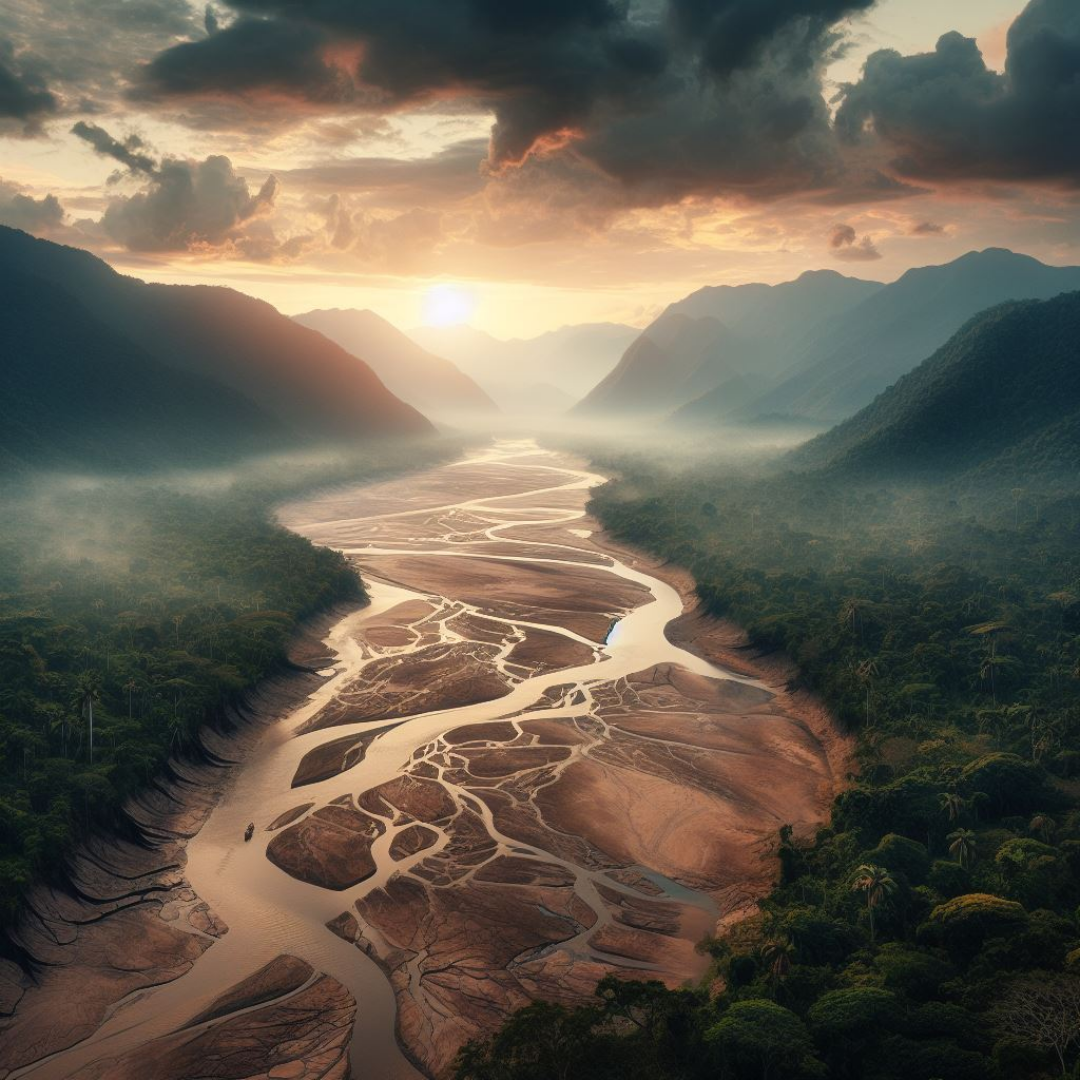The Science Ministry of Brazil attributes this crippling drought to the onset of the El Nino climate phenomenon this year, which has been causing extreme weather patterns worldwide.

A relentless drought is upsetting the lives of hundreds of thousands of people and wrecking havoc on the ecosystem of the Brazilian rainforest, and as a result, the Amazon River, the lifeblood of the rainforest, has reached its lowest ebb in more than a century.
This devastating dry spell has rendered vital tributaries to the Amazon nearly barren, leaving boats stranded and cutting off crucial supplies of food and water to isolated communities. Tragically, it’s suspected that the elevated water temperatures have led to the demise of over 100 endangered river dolphins.
At the bustling port of Manaus, the largest city in the region, where the Rio Negro converges with the Amazon River, the water level plummeted to 13.59 meters (44.6 ft) on Monday, compared to 17.60 meters just a year ago, according to port records. This marks the lowest point since meticulous records began in 1902, surpassing the previous record set in 2010.
Pedro Mendonca, a resident of Santa Helena do Ingles, expressed relief when a Brazilian NGO provided vital supplies to his riverside community after enduring three rainless months. “It is much hotter than past droughts,” he observed.
In an alarming statistic, some parts of the Amazon have seen the scarcest rainfall from July to September since 1980, as reported by the Brazilian government’s disaster alert center, Cemaden.
The Science Ministry of Brazil attributes this crippling drought to the onset of the El Nino climate phenomenon this year, which has been causing extreme weather patterns worldwide. In a recent statement, the ministry projected that the drought is likely to persist until at least December, coinciding with the anticipated peak of El Nino‘s effects.
According to the civil defense agency in Amazonas state, where Manaus is situated, the drought has affected a staggering 481,000 individuals as of Monday.
Last week, workers from the Brazilian NGO Fundacao Amazonia Sustentavel (FAS) embarked on a mission to deliver crucial supplies to vulnerable villages in the arid vicinity of Manaus. The drought has jeopardized their access to fundamental necessities such as food, potable water, and medicines, which are typically transported via the river.
While some areas remain reachable by canoe, a multitude of boats has been unable to transport supplies along the river, leading to a reliance on tractors and foot travel.
Luciana Valentin, a resident of Santa Helena do Ingles, voiced apprehensions about the potability of the local water supply, given the drought-induced drop in water levels. “Our children are getting diarrhea, vomiting, and often having fever because of the water,” she lamented.